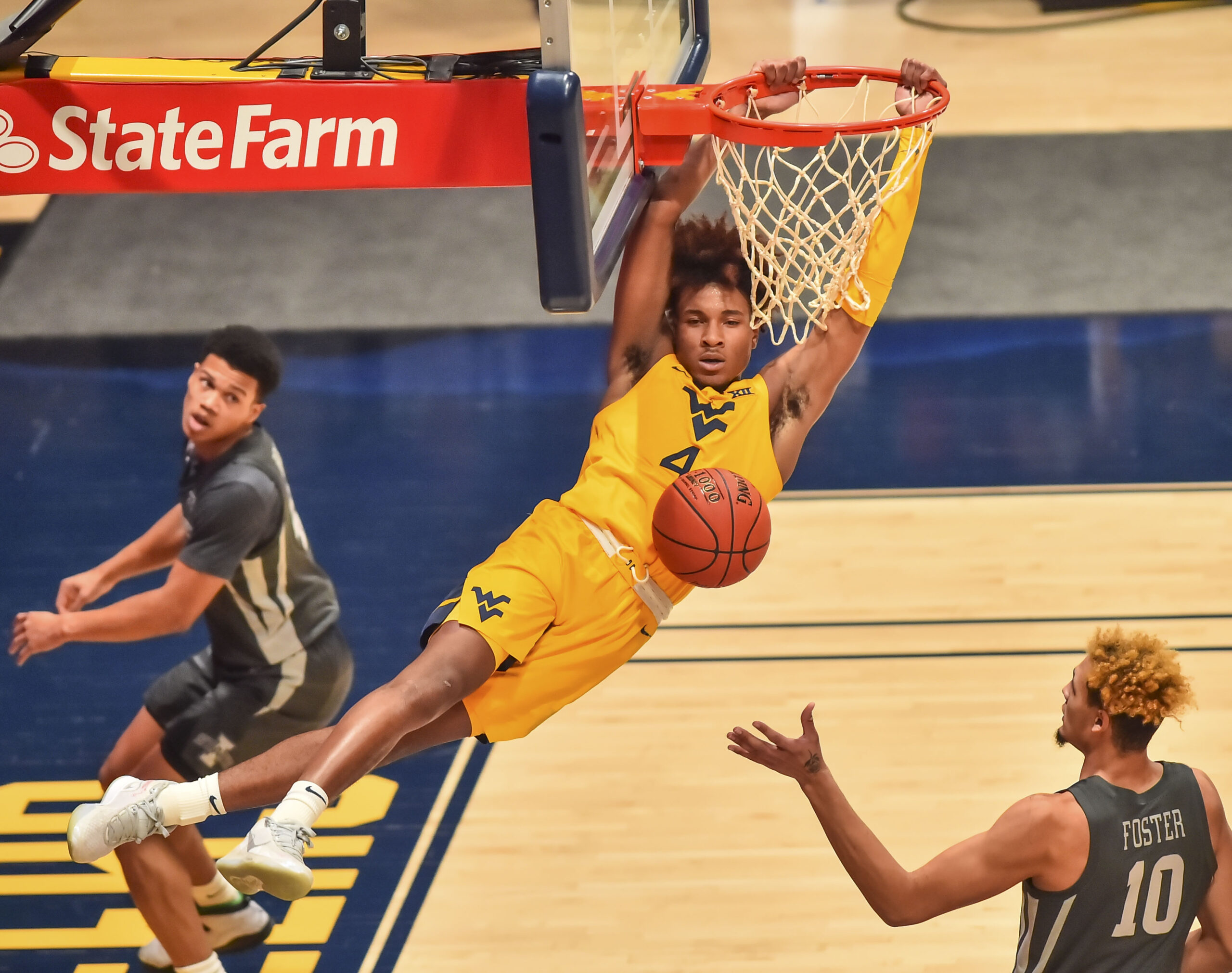MORGANTOWN — No sane person should ever admit to understanding the basic rational of the NBA Draft.
Their time would be better spent teaching an 8-year old about the stock market or the definition of loyalty to a Texas alum.
The NBA Draft is deep water that should only be tread while wearing a dozen life jackets, because there is truly no predictability and seemingly little common sense to be found.
Don’t believe me, well, just listen to Mike Gansey.
“The draft is a wild process that you can’t really put into words,” said Gansey, the former WVU standout who is now the assistant general manager of the Cleveland Cavaliers. “Every team has their own criteria of what they’re looking for, and even though we’re all looking at the same kids, each team may see the same kid 30 different ways.”
Based on Thursday’s draft results, we could spend days on the decisions made by former WVU players Deuce McBride and Derek Culver.
Both left college eligibility on the table for their shot at the pros. You don’t do that with the thought process of getting taken as the No. 6 pick in the second round, in McBride’s case, or not be drafted at all, which was the situation for Culver.
They could have both returned to WVU and led the Mountaineers to a run at Big 12 titles and deep NCAA tournament runs, while improving their draft stock along the way.
That is the instant reaction of a realist, yet there is nothing real about the NBA Draft.
That, in a nutshell, is the problem. See, the draft doesn’t have to be this big complicated thing where terms like upside and wingspan are so critical.
Think back to the playground as kids picking teams. You knew who the best players were. They were either the tallest or the quickest or the best shooter, or maybe a combination.
You didn’t need to know their vertical leap or how big their hands were when making the pick. Why has choosing players become so difficult and unpredictable as adults?
“The whole thing is these kids are so young now coming through the draft,” Gansey said. “So, when you draft someone, it’s not really about drafting someone who is going to help you right away. It’s more about trying to project how a guy can help you three or four years from now.”
Those projections are what have turned the draft into a near guessing game, and why someone who was a star in college may not translate into a high pick in the draft.
“Say you’ve got a 21-year old guy in college who is averaging 20 points a game at a big school,” Gansey began. “The question about a guy like that is whether or not he’s already maxed himself out? Like me, I averaged 17 points a game as a senior playing in the Big East, but I had basically already reached my ceiling.
“Then you may have a 19-year old kid at another school. His stats aren’t that great, but his ceiling is so much higher. That kid will be drafted higher.”
Alabama point guard Joshua Primo is the prime example. He was picked 12th overall by the San Antonio Spurs for nothing more, from what I can tell, that he was still 18 years old.
Forget the fact that Primo wasn’t even a starter in 11 of the 30 games the Crimson Tide played last season or that he scored in double figures in just 12 of the 30.
His potential in what he may be as a player in 2024 could not be overlooked by the Spurs.
“What a guy’s ceiling is doesn’t show up on the stat sheet and it’s really the hardest thing to predict,” Gansey said. “You may try to predict it with how high a guy jumps or how athletic he may be, but it’s still so hard to tell.”
And so we get back to McBride and Culver.
Yeah, they could have come back and had monster seasons, but my question is would that have really made a difference?
McBride would still be 6-foot-2, and his lack of size definitely scared away some teams, no doubt.
And he would have been three months shy of his 22nd birthday at the 2022 draft, which apparently is ancient by NBA Draft standards.
Culver could have come back and maybe put up Luka Garza-type numbers. Well, here’s what that actually got Garza: The No. 52 pick out of 60.
Actual college production and success, while it may be on every general manager’s checklist, is not always the highest priority.
“I think NBA teams would love to draft more guys that will help their teams right away,” Gansey said. “The problem with that is you draft the older guy and maybe he does well as a rookie, but he’s probably not going to get much better and now you’re stuck.”
We are only left the great what-if question now, as in what if McBride and Culver had decided to come back for another season with the Mountaineers?
It’s easy for the rest of us to think they could have helped their NBA stock, but the truth is it may not have been by leaps and bounds.
“The whole thing about going back for another year of college is it usually doesn’t help that much in terms of the draft,” said Gansey, who was speaking in general terms and not specifically about McBride or Culver. “Even if you have a monster year, what we’ve seen is you may improve a few spots, maybe as much as 10, but it’s rare that someone shoots up the draft board after spending an extra year in college.”
TWEET @bigjax3211




